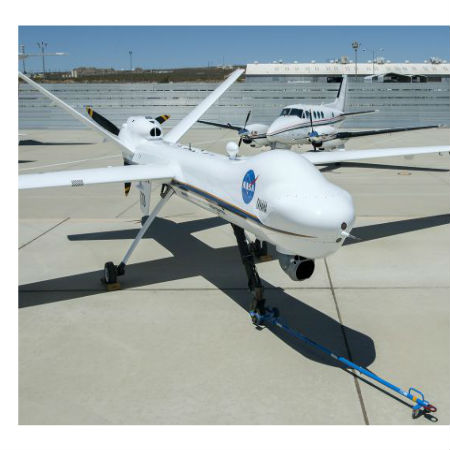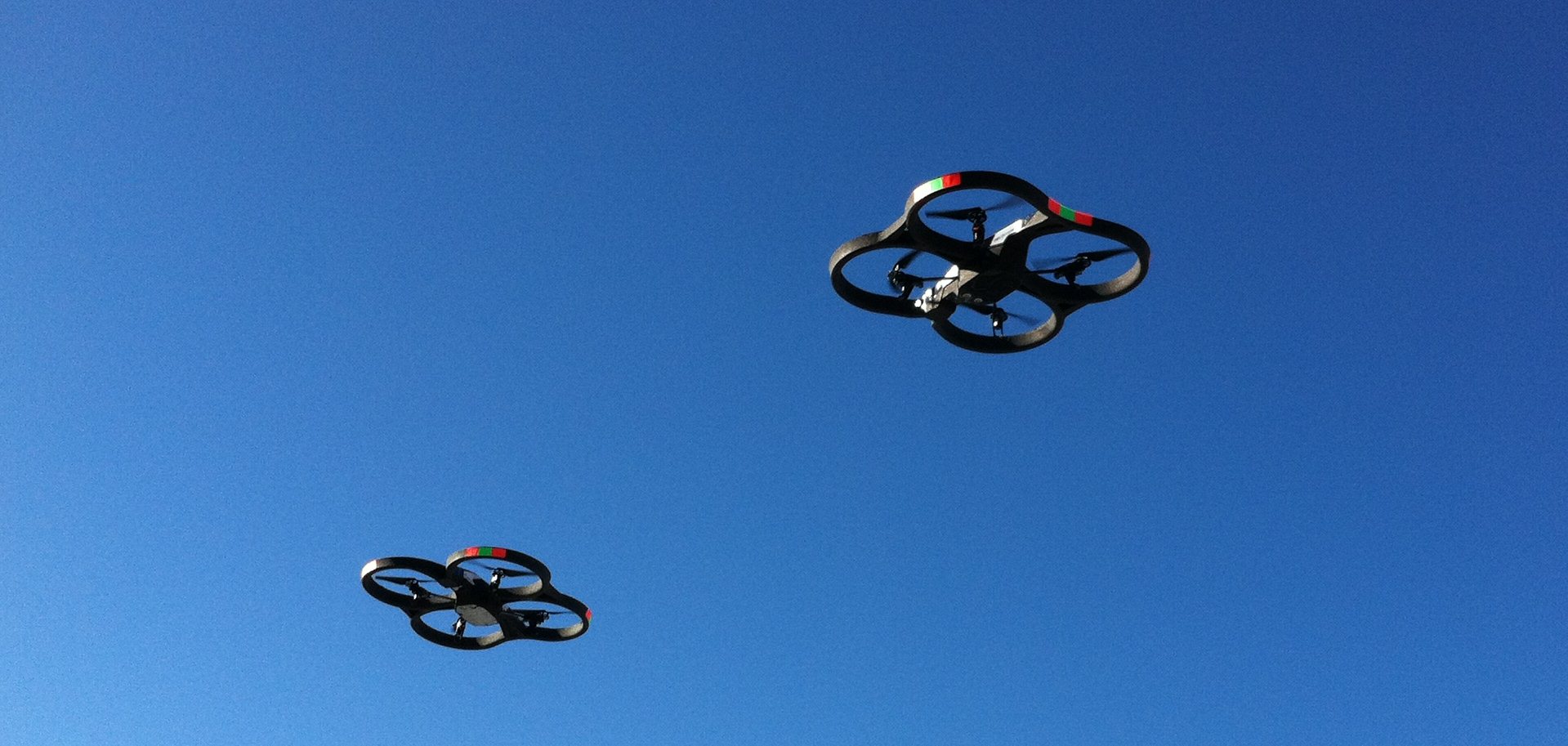
Irresponsible drones are not in all cases due to the negligence or bad intent of the controller. Rather it is a like a Frankenstein monster, which the creator lost control over without intent. There have been recorded cases where drones failed to yield to command and entered no flying zones. This has spurred NASA to come up with a new technology – drones on a virtual leash which brings a drone down when it fails to yield to command.
Following a surge in the number of drones, which as well includes the number of perilous drone accidents and security infractions, NASA has concluded on keeping the flying devices in check a trial.
Drones on a Virtual Leash by NASA
Scroll down for video

Ovnis invasion
Having to lose one’s drone can cause a great deal of trouble. Just ask Shawn Usman, who was commandeering a UAV from his downtown DC apartment on January 26, when spontaneously the drone flew away and got smashed onto the White House glade. For Usman’s case, the Secret Service decided not to prosecute—not every individual who lost control of their drone has luck shined upon.
In a bid to halt messenger drones, NASA’s come up with a tool that could assist offing pilots have their drones proximate. The tool, a unique box that is stuffed into the UAV, and subsequently when it effectuates, the drones smashes onto the ground.
How It Works
Christened Safeguard is a virtual safety net. Those that employ its usage prescribe rules for the drone, and the machine authenticates those rules to ensure it hovers within the permitted area. If it strays to the brim of the border, it’s expected to take a return flight, and if it fails in doing that, the safety net causes the drone to crash to the ground before it trespasses into a “no-fly-zone.”
The “safety net in a box” appears to be an auspicious answer, surmounting the greatest downside of present systems, but it has its own major disadvantage that could render it ineffectual.

AndNowUKnow
Various border confine tools for drones, like geofencing, utilize GPS signals and trackers attached to the drone. They operate perfectly most of the time, as long as the GPS signal is firm and the autopilot doesn’t develop issues. The time it encounters such issues, a system that is dependent on GPS signals and autopilot to keep the drone from straying away will surely be in trouble—this is why NASA Safeguard is built to be independent of them. Rather, according to NASA, it leans on “rigorous mathematics and works independently of the onboard autopilot.” Consequently, even if the GPS or the autopilot on the drone breaks down, the Safeguard can halt the robot from straying, shielding it (and its pilot) from the embarrassment of crashing on the White House lawn.
Arising Matters
However, there are some essential questions that need to be answered. First is how will NASA get the little box on the drone? Will manufacturers be mandated to pre-install it on drones? How do they monitor it to prevent unscrupulous persons from tampering with it? Can drones on a virtual leash really be controlled? This and a whole lot of other questions need to be put into consideration to enhance a hitch less operation of the technology.
Watch the video below